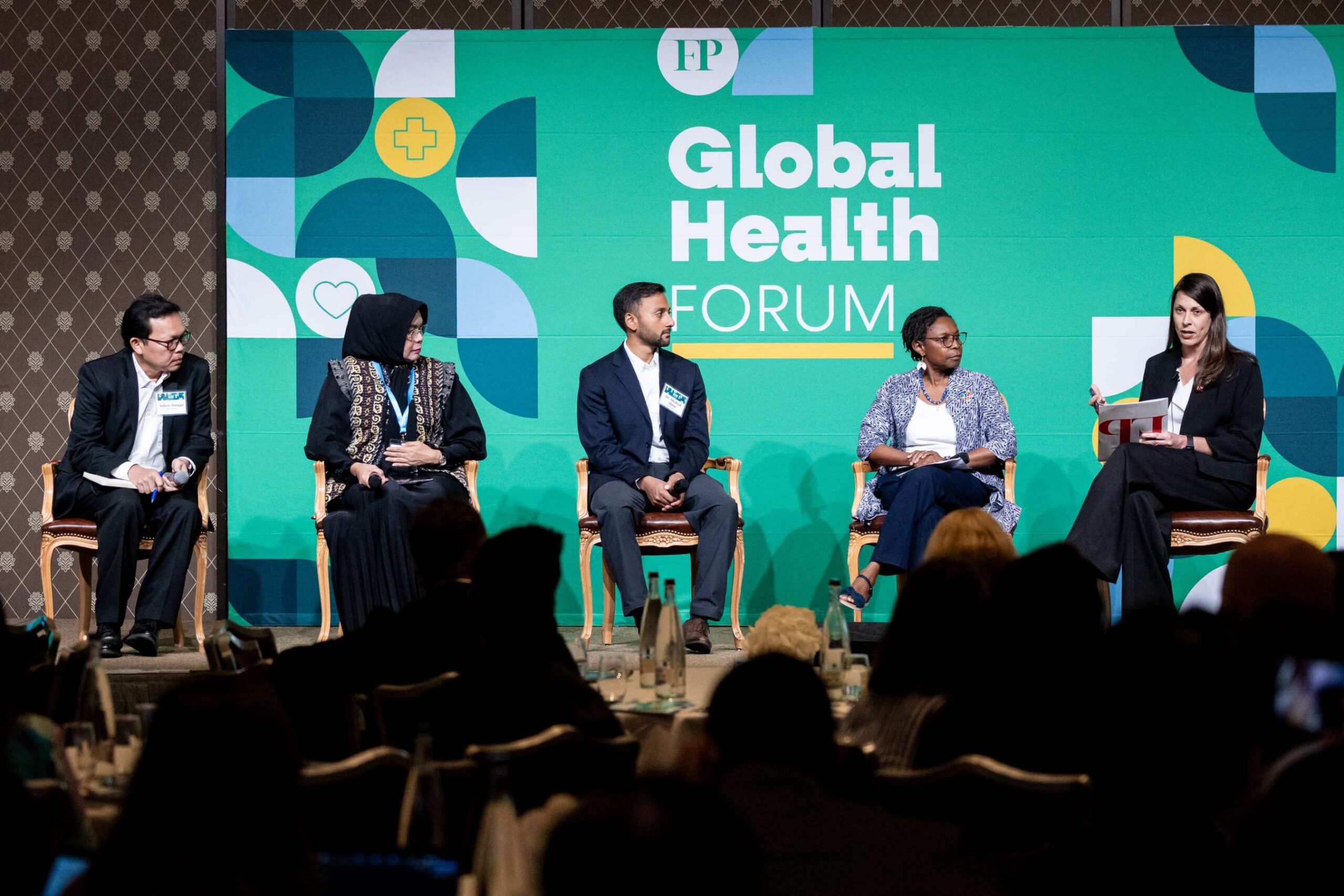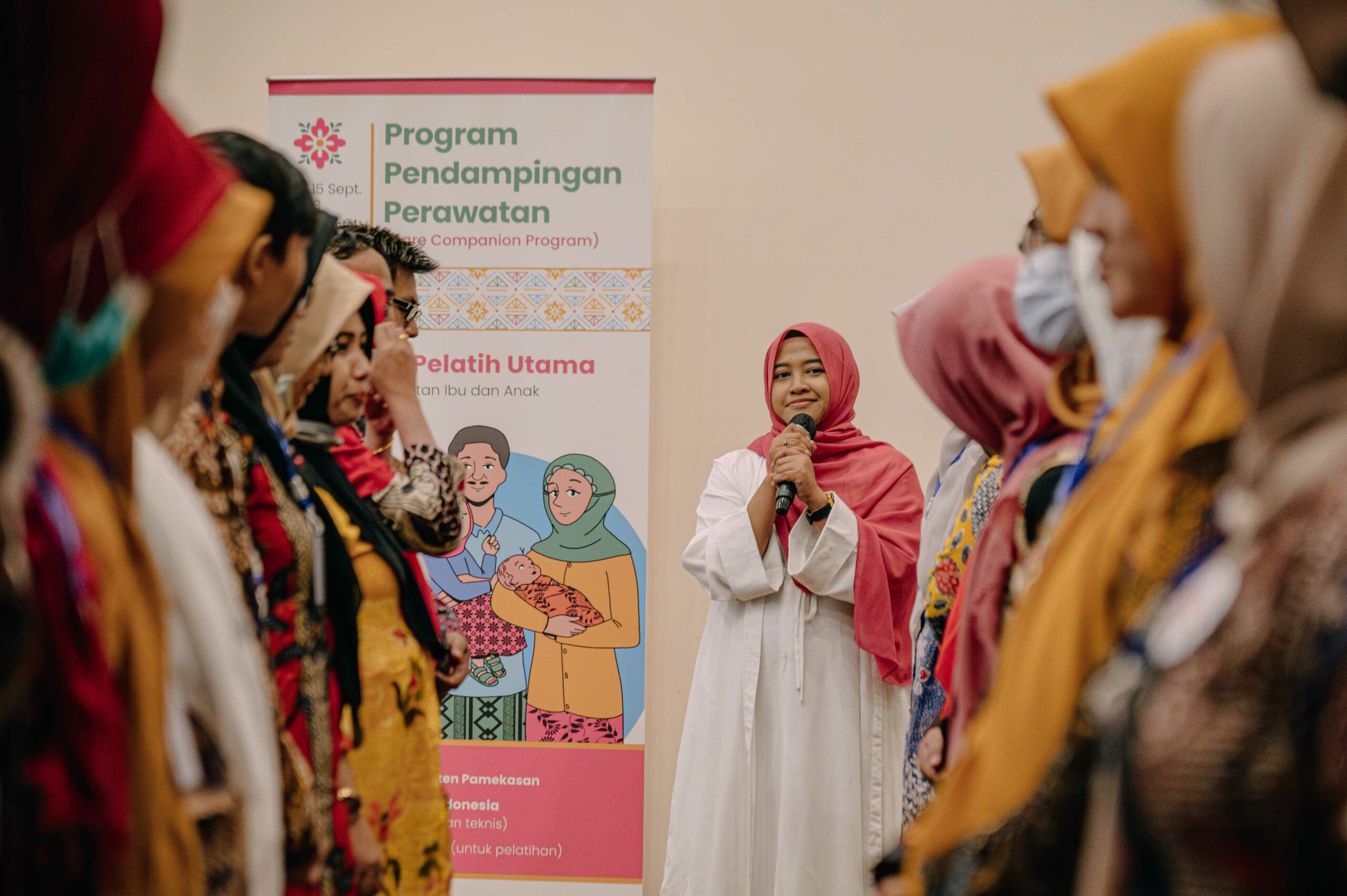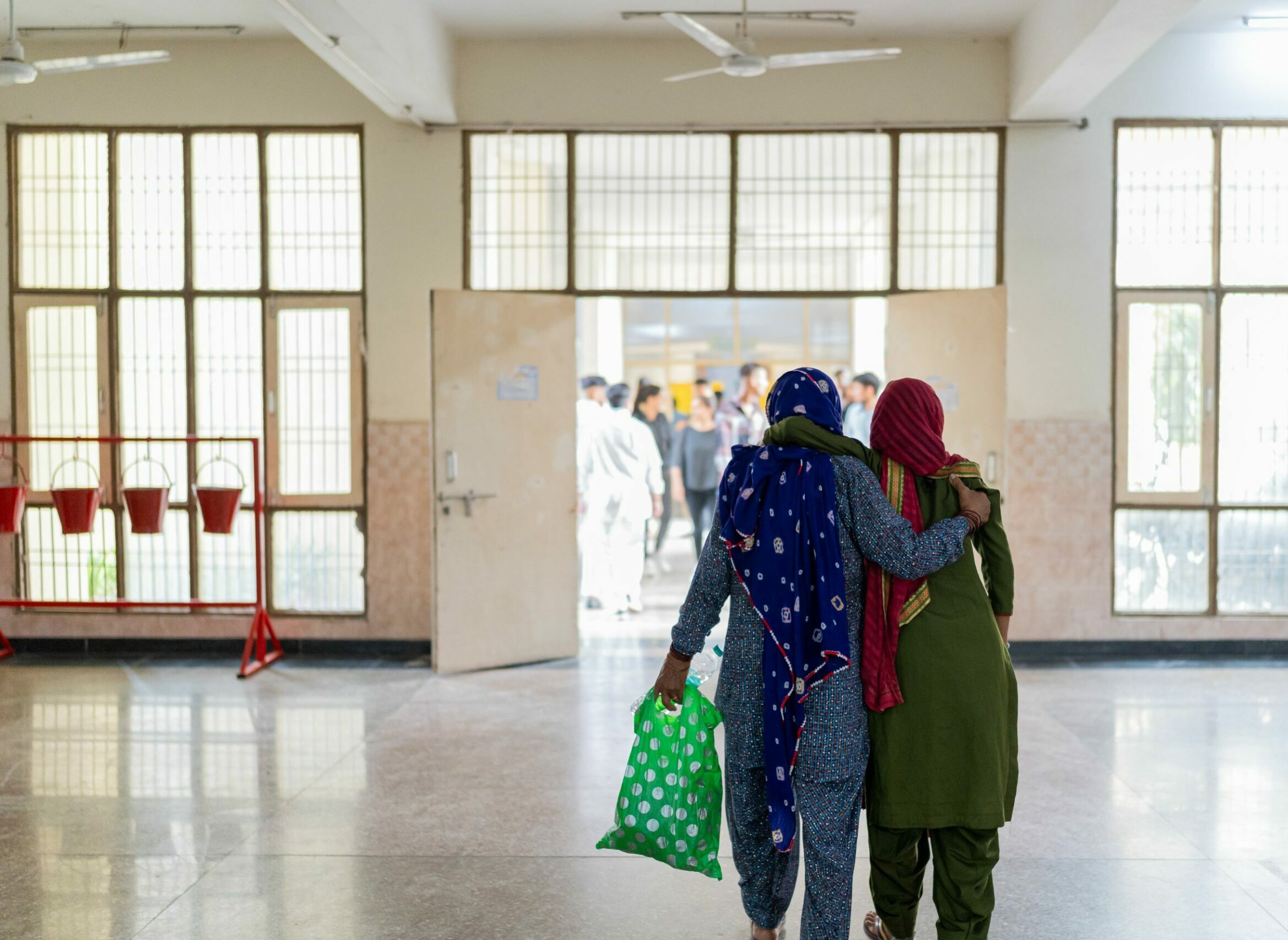

Four takeaways from the sidelines of WHA78 on supporting family caregivers
At the sidelines of the recently concluded 78th World Health Assembly, we co-hosted a conversation with Foreign Policy on the critical role of family caregivers in health systems, and how countries can integrate caregiver training programs into their national strategies. Our Co-Founder and Co-CEO Dr. Shahed Alam was joined by Dr. Pascale Allotey of the World Health Organization (WHO), Dr. Ade Jubaedah of the Indonesian Midwives Association, and Allison Carlson of Foreign Policy, as they spoke about the essential role of family caregivers across contexts and health systems, what’s needed to truly formalize caregiving, and important considerations we need to keep in mind.
Here are four ideas that stayed with us:
1. Most care happens at home and systems need to reflect this reality
We often think of healthcare happening only in hospitals or clinics, but most long-term care happens at home, usually provided by informal caregivers — our family, neighbors, or loved ones. An estimate by the WHO suggests that over 80 percent of long-term care in Europe happens at home, and this figure may be even higher in many low- and middle-income countries. Unfortunately, caregivers typically receive little to no support from the larger healthcare system.
Yet, the evidence is clear: When caregivers are trained and supported, patient outcomes improve.
At Noora Health, across health conditions, we’ve seen this time and again — supporting caregivers not only reduces their burden of care, but also results in better recovery rates, reduced complications, and fewer hospital readmissions.
That’s why it’s vital for health systems to recognize caregivers as an integral part of care delivery. This means building systems where caregiving is embedded within healthcare processes, not treated as an afterthought. And with a projected global shortage of nearly 11 million healthcare workers by 2030, enabling caregivers is not just compassionate — it’s necessary.
There’s still more work to be done. Caregiving is often invisible in health planning and policy, and disparities in access to support persist. But by working together across sectors, borders, and communities, we can build a future where caregivers are seen, supported, and central to healthcare.
2. Formalizing caregiving shouldn’t reinforce existing inequities
According to the International Labour Organization, the global unpaid care economy is valued at over USD 11 trillion annually, nearly nine percent of global GDP. Yet this labor remains largely invisible and unpaid, disproportionately falling on women and girls.
Integrating caregiving into health systems is an important step forward. But without safeguards, it risks institutionalizing existing imbalances. Framing caregiving solely as a cost-saving measure — especially amid health worker shortages and overstretched health systems — risks reducing caregivers, particularly women and girls, to quick fixes for deeper systemic problems. This overlooks the fact that caregiving is skilled, essential work that deserves dignity, support, compensation, and recognition.
That’s why it’s essential to approach formalization with care, grounding it in evidence, and designing systems that avoid perpetuating inequity in already unequal environments.
At Noora Health, we recognize that most caregiving is done by women and girls, especially in the regions we work in — taking on almost four times more caregiving hours than men, often at considerable emotional, physical, and financial cost. To address this, we actively seek to include men at every touchpoint of our training and messaging platforms. In contexts where men often have greater access to mobile phones — and therefore more information — this intentional inclusion also helps bridge access gaps.
Watch the full conversation at the Global Health Forum.
3. Promising models of integration already exist
Indonesia provides a compelling example of integrating caregiving within a national health system. Its health transformation policy, built around six pillars, includes a key focus on primary healthcare. Given Indonesia’s vast geographical landscape — distributed across thousands of islands and villages — there is an emphasis on decentralizing caregiving and strengthening community-based care.
A prime example of this approach is the role midwives play in Indonesia’s healthcare system. More than 350,000 are formally embedded within the primary health system and trained to deliver essential caregiving services, including health education, screening, and family support. They provide comprehensive care throughout the life cycle, from pregnancy to elderly care.
This approach not only recognizes caregiving as a core part of health services but also institutionalizes it through existing healthcare infrastructure, offering a scalable and effective model for bringing caregiving into national policy.
This reinforces a key insight: Integrating caregiving into formal systems is both possible and already underway in parts of the world.
What’s needed now is broader commitment, policy alignment, and global frameworks that prioritize this critical work. Indonesia’s upcoming guidelines on incorporating family caregiver education into healthcare — which are being developed with support from civil society organizations like ours — exemplify how policy can evolve to better recognize and strengthen the caregiving that already happens in communities.
4. Financial support and recognition need to be looked at holistically
If caregiving is to be treated as essential to public health, it must be backed by sustained, systemic investment. This doesn’t always require entirely new funding streams. Often, it’s about strategically aligning existing resources to better support families.
At Noora Health, our work primarily involves supporting family caregivers by offering basic health skills training through public health systems. In our partnerships with governments, we’ve found that many existing budget line items such as those for information, education, and communication; training; or capacity-building, are frequently underutilized. By reorienting these budgets, they can be leveraged to meaningfully strengthen caregiving within formal systems. This approach offers a practical, short-term pathway while laying the groundwork for longer-term integration.
However, making caregiving a meaningful part of universal health coverage will require more than short-term solutions. It calls for sustained, systemic investment. In countries like Sweden and Japan, caregiving is well-supported through state-backed mechanisms such as paid caregiver leave, pension contributions, and more.
While this approach may not yet be feasible in many low- and middle-income countries, an alternative is to start by linking caregiver support to social protection programs. Mechanisms like caregiver allowances, tax credits, or paid leave can be explored. Public–private partnerships can also play a role as long as they are well-regulated to avoid the commodification of care. We also need to think about the informal workforce — even if caregivers aren’t employed formally, they still deserve protection and support.
Examples from around the world can be adapted to local contexts. Within the framework of universal health coverage, these changes are both feasible and necessary. But to get there, we need more investment in research and evidence on what works.
The truth is, we’re all caregivers. Whether we’re supporting aging parents, helping our partners through pregnancy and childbirth, or nursing our children back to health, care is everywhere. Yet, our health systems often operate in parallel to this reality.
The conversations at the 78th World Health Assembly reminded us that the question isn’t whether we should integrate caregiving into our health systems, but how quickly and effectively we can build systems worthy of the care that’s already being given. The path forward requires investment, intentional design, and the courage to reimagine healthcare around the people keeping us and our loved ones healthy and whole.



